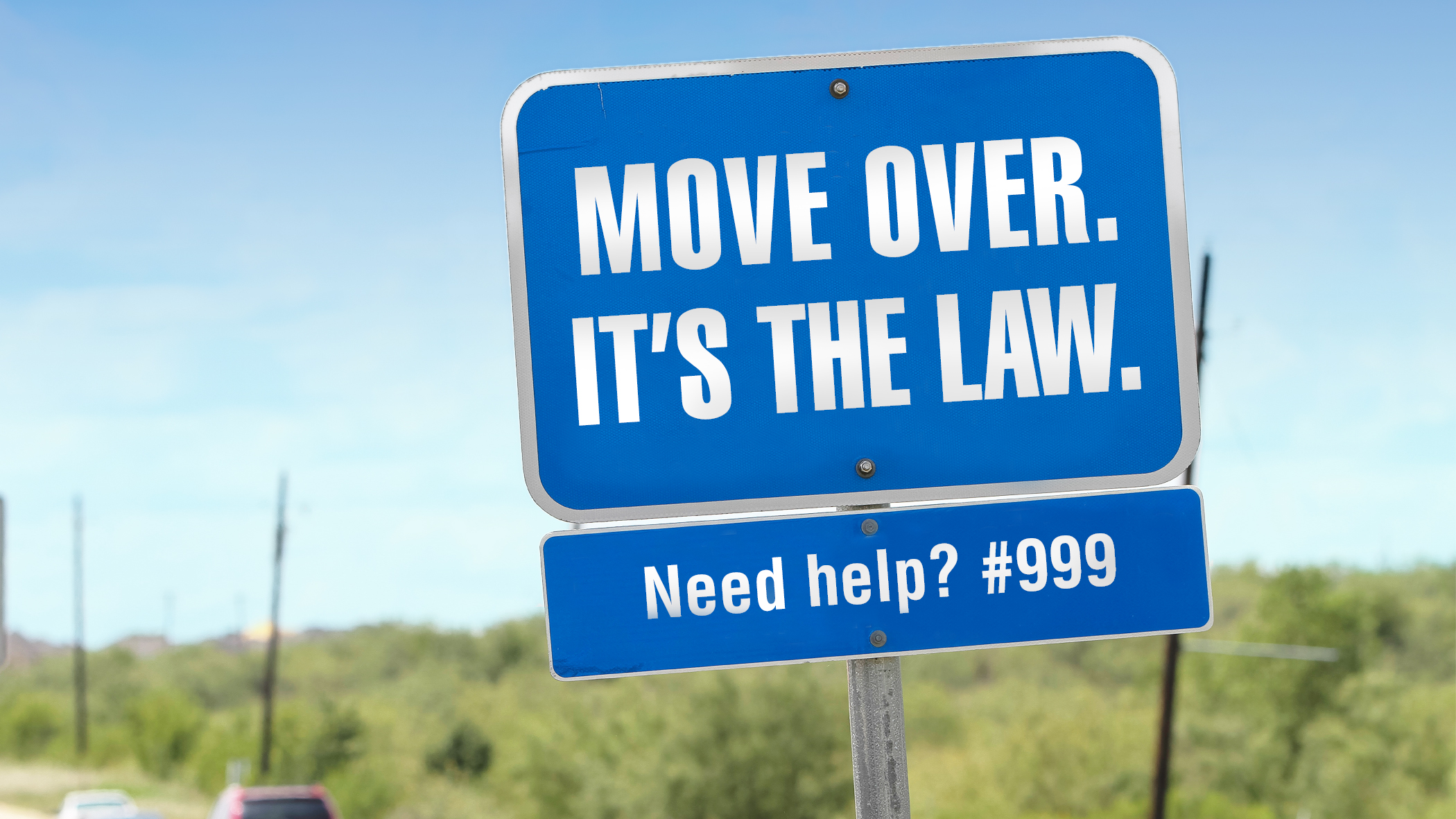
Emphasis On Safety
Safety is a top priority for NTTA. We use industry-leading technology and programs to keep our toll roads safer and help protect our millions of customers in North Texas.

Roadside Safety Services (RSS)
Dial #999 For Help
NTTA provides Roadside Safety Services (RSS) at no additional cost to anyone on an NTTA road – it’s one way of keeping our customers safe by assisting stranded drivers and help keep traffic moving.
The RSS team is trained in Traffic Incident Management so they can safely respond and handle incidents impacting travel lanes such as crashes, debris or stranded motorists. The friendly crews will change a flat tire, provide enough gas to get you to the nearest gas station, jump-start dead batteries, make minor vehicle repairs, provide traffic protection and more. You can get free help by dialing #999 – or clicking “Free Roadside Help” on NTTA’s TollMate app.
Report a Non-Emergency
To report a non-emergency safety or road issue on any NTTA road, please email @email.

Safety Operations Center (SOC)
Dial #999
To help keep drivers safe and traffic flowing smoothly, our Safety Operations Center (SOC) is staffed with specially trained dispatchers who assess our road conditions around the clock, 365 days a year. If a stranded vehicle, crash or any other hazard is detected, these dispatchers send first responders and/or the nearest available Roadside Safety Services team to help. Watch our team in action here.
More than 20 giant video screens inside our state-of-the-art SOC provide dispatchers the ability to monitor nearly 2,000 roadside cameras at any given time. The team also programs overhead electronic signs with safety alerts and messages to help keep you safe while driving with NTTA.
Wrong-Way Driving Prevention
We pioneered deployment of industry-leading technology to minimize wrong-way driving accidents. The tools we use include:
- Thermal imaging cameras to detect if a vehicle is driving in the wrong direction, which triggers flashing signs as an instant alert to the wrong-way driver and sends notification to the Safety Operations Center (SOC)
- An automated wrong-way detection system using existing pavement sensors that immediately alert the SOC of a possible wrong-way driver
- Lowered “Wrong Way” and “Do Not Enter” signs at various locations across the system
NTTA routinely receives the suggestion to place spike strips on exit ramps to stop wrong-way vehicles, however, a Texas Department of Transportation engineering analysis concluded this is not a viable option as it presents significant risk to drivers (including vehicles traveling in the correct direction) and first responders (damaging emergency vehicles that sometimes must use exit ramps to access accidents).
If you would like to learn more about our wrong-way driving prevention efforts, please email @email.
Red Thumb
The consequences of driving distracted are severe – no text is worth a life. In 2015, NTTA joined the Red Thumb safety campaign, which is aimed at ending distracted driving, specifically texting and driving. We encourage drivers to make some part of their thumb red as a visual reminder to keep their hands on the wheel and eyes on the road at all times. Free Red Thumb bands are available at any NTTA Customer Service Center. Join the movement! Learn more.
More than 50 North Texas municipal, community and business partners have joined the Red Thumb program, including the cities of Allen, Coppell, Denton, Fort Worth, Grand Prairie, Plano and the Texas Department of Transportation. Join the Red Thumb movement today.

How You Can Help

Move Over Law
NTTA vehicles are included in Texas’ Move Over Law. If you see one of our vehicles, or a first-responder vehicle on the side of the road, move over into another lane or slow down at least 20 mph less than the posted speed limit. Learn more from one of our safety team leads.
Steer It & Clear It
NTTA joined the “Steer It & Clear It” campaign to remind customers that if they are involved in a minor traffic accident, Texas law requires them to move their vehicle(s) off the road if there are no serious injuries and the vehicle(s) can be operated safely.
